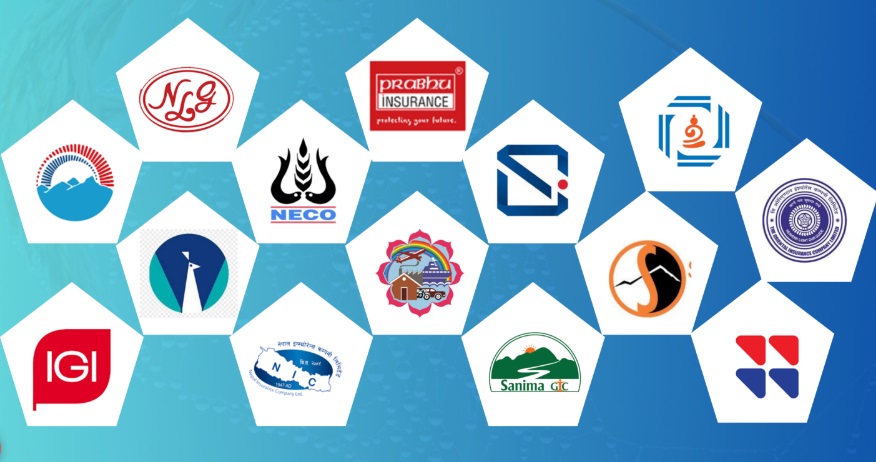Kathmandu. Sanima Reliance Life Insurance is the Chief Executive Officer (CEO), #Shivnath Pandey. Before becoming the CEO of the former Surya Life Insurance Company, Pandey was the Executive Director of Nepal Rastra Bank. He resigned from the post with a short tenure remaining at the former Surya Life. And he became the CEO of Sanima Reliance Life Insurance, which was formed after the merger. A chartered accountant, Pandey is also the founding president of the Nepal Jeevan Beemak Sangh. Pandey also has long experience working at the policy-making level of the banking sector regulator, Nepal Rastra Bank. Summary of the conversation with the same CEO Pandey on ##Insurance Talk####:
##
## ##You ended up leading a life insurance company after completing your career as an employee of Nepal Rastra Bank. What is it like to be a regulator of the banking sector and look at that sector and to be the leader of an insurance company and play a role in growing the insurance market?
##
## There is a huge difference. I had the opportunity to work in a high position in the central bank, especially at the policy-making level. Since the National Bank is the regulatory body, the institution that makes banks and financial institutions and monetary policies, the work there was to formulate policies, work for financial stability, and work to provide financial access to banks and financial institutions across the country, and instill public confidence in banks and financial institutions. With the recent development of the payment system, we worked to organize the payment system in a safe, reliable and transparent manner. When we look at policy-making there, we look at the sustainable development of the country, for the growth of growth. After working at the policy-making level, its impact is not immediately visible. Its results are visible only later. I have left that field and come in the exact opposite direction. Insurance was a separate subject. Although I had to be in the financial sector, I personally felt it was different. On the other hand, our regulatory body is the Insurance Authority. Now we are result-oriented. Now the focus is on selling insurance products, looking at how the premium growth is, paying attention to how to make claims simple, easy and fast, and how much return will be given to shareholders in the form of dividends? How to give it?
Some individuals who have left the National Bank as executive directors say they will become bankers, prepare to become governors, or go to other regulators. Even if that does not happen, they are running to work in commercial banks. They even go there and sit on the board. But, why did you choose the insurance sector? Is there any special reason or logic in choosing the insurance sector?
There is no such fundamental logic. I also thought that if you work in a new field, you can understand that field, increase your knowledge, and if you work hard in a different field, you can give good results. Along with this, there was a situation where senior friends were on the board behind coming to this field and they were saying that we should work together to work in this new field. After such a request from seniors, it is a situation where we should not accept our culture. When such a request is made, we could not say no.
After saying that, today you are working as a market player. Have you ever come to a point where you think I am doing something after leaving there?
That is for you to judge rather than me. I think I have done well in this field. I have had the opportunity to learn in this field.
Where can we take banks and insurance together to improve the prosperity of the country and the living standards of its citizens?
In particular, I believe that insurance leads to economic prosperity. Because everyone understands that it transfers risk and provides financial security. Now, in our context, if insurance is prioritized by the state for all people living in remote areas, people will feel insecure because they think, “What if something happens to my children tomorrow morning? What will happen to my condition? What will my health be like?” Insurance works to boost morale in people in this regard. I have also served in the policy-making level and am currently working in the insurance sector. As you said, if we can connect the areas, especially its distribution channels, to the lower level, if we can increase awareness about insurance and increase the ability to attract people to insurance, we can do a lot of things.
You were talking about distribution channels. We are still going in the traditional way, right?
When it comes to the distribution channel, Nepal Rastra Bank became the regulator. The network of banks and financial institutions is very large, all over the country. That channel was developed as bancassurance in the middle. Later, the Rastra Bank stopped it. The reason for stopping it is not known. However, it would be good if we could use that area as a platform to sell products. However, we may not have been able to convince. It seems that it would be good if we could discuss this in detail and move forward.
There was also a dilemma in this, right? We are in a country where the informal economy is almost 40 percent. That kind of economy has a character, insurance should go down and play a role in making it formal. The expectation of the National Bank and the banking sector is that the money on the citizens’ heads should be brought to the formal channel through insurance policies. And you should tell the bank that they should not sell policies to those who have already come. Isn’t there a little rhythm?
How do we say that there is an informal sector economy? Some of it is informal. Right now, we are using the agent channel more. Digitalization has not reached that level yet. It is not just about people in banks through banking channels. It is not a medium or platform. If policies are sold through banks, people have more confidence in the bank. If they can sell through banks, it is only about transparency and the insurance business will grow. Therefore, it is not about using bank channels to bring money from the informal sector into insurance. The aim is to keep everyone in the scope of insurance.
We can look at the neighborhood, the market size of aggregators is very good. They are doing insurance business better than through agencies. That concept has not yet taken shape here. Has it not even begun?
Gradually.
How much role does it play? Looking at today’s market, technology, etc., what happens when you bring in the concept of an aggregator?
Very good. It is developing gradually. Our regulatory body is also in a state of transition. It is only recently moving forward from the Insurance Committee to the Authority. Recently, work is being done to organize policies, rules, and licensing. We can see that there has been visible development in this. Therefore, the distribution channels are gradually changing, and aggregators are coming. Due to which the insurance business is sure to grow further.
We say that we have reached around 40 percent insurance access. What is this situation for a country like ours? How to analyze it?
If we analyze the data, it is said that about 45 percent of the citizens are covered by insurance. There are some wealthy people among them, for whom insurance is necessary or not, there can be a debate about whether it is necessary. Because they are financially wealthy, if they can withdraw it when necessary, that would be different. If a population is like that, then the problem of food and shelter is more than insurance. Whether we can bring those people under the insurance coverage is one aspect. Such citizens should be brought under insurance. For which the state should pay special attention. They should be brought under insurance to boost morale. They should also be brought under insurance to lead them towards prosperity. This can be a matter of debate. What remains is the middle class. When only they are covered under the insurance coverage and the situation has reached 45 percent, it seems that there is a need to include those living at the lower level.
When you plan for insurance, who do you plan for at the upper, middle or lower levels as mentioned above?
If it is said that the people below do not have regular income, then it is not enough to just issue an insurance policy. The people at the top level can be told not only about all the financial security, but also about what will happen tomorrow. If they buy it, a kind of vibe will also go out in the market. Therefore, we have to convince them too. Programs are being introduced to create attraction towards insurance for the middle class as well. Agents are playing a role in that.
The government has given licenses to small insurance companies to insure the poor. Your big companies have also set a kind of limit. This also sounds very popular. How easy is it to insure the poor? What should be done to move forward in their interest?
The concept of microinsurance is not bad. Its concept was brought because of the lack of access to insurance among citizens living below the absolute poverty line. There is a problem of not being able to eat daily, not being able to meet daily expenses. Microinsurance should also look at whether citizens can pay or not. Small products should be brought for them. In this, the state should move towards this by providing concessions to citizens living below the poverty line while making a living.






















